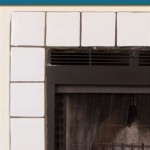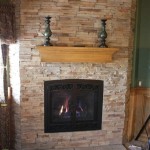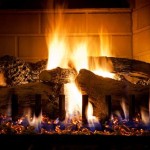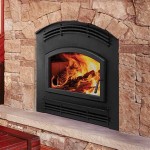Understanding Direct Vent Fireplace Covers: Safety, Aesthetics, and Functionality
Direct vent fireplaces offer a convenient and efficient way to enjoy the ambiance of a fire without the complexities of traditional chimneys. These fireplaces utilize a sealed combustion system that vents directly to the outdoors, drawing fresh air from outside and expelling exhaust gases. A critical component of this system is the vent termination, which is located on the exterior of the home. To protect this vent and enhance its appearance, direct vent fireplace covers are often employed. These covers serve multiple purposes, ranging from preventing debris from entering the vent to mitigating potential hazards and improving the overall aesthetic appeal of the fireplace system.
A direct vent fireplace draws combustion air from outside the home through one pipe and expels exhaust gasses through another, both contained within a single vent system that terminates on an exterior wall. This type of venting system offers several advantages, including increased energy efficiency and improved indoor air quality because combustion byproducts are completely sealed off from the living space. Unlike traditional fireplaces that rely on room air for combustion and can draw heated air out of the house, direct vent systems create a sealed environment, minimizing heat loss and preventing backdrafts. Because the vent termination is exposed to the elements, it requires protection from the ingress of debris, animals, and weather-related damage. This is where the direct vent fireplace cover becomes essential.
The design and construction of direct vent fireplace covers vary widely, depending on the manufacturer, the specific fireplace model, and the desired aesthetic considerations. Common materials used in their construction include powder-coated steel, stainless steel, and aluminum. The choice of material depends largely on the desired durability, resistance to corrosion, and aesthetic finish. Powder-coated steel offers a cost-effective solution with good corrosion resistance, while stainless steel provides superior durability and a sleek, modern appearance. Aluminum is lightweight and corrosion-resistant, making it a suitable choice for certain applications. Ultimately, the choice of material should align with the overall design of the home and the homeowner's preferences.
Key Point 1: Enhancing Safety and Preventing Obstructions
One of the primary functions of a direct vent fireplace cover is to enhance safety and prevent obstructions in the vent system. The vent termination is vulnerable to the accumulation of debris, such as leaves, snow, and ice, which can restrict airflow and potentially lead to dangerous conditions. A blocked vent can cause incomplete combustion, resulting in the buildup of carbon monoxide, a colorless and odorless gas that poses a significant health risk. The cover acts as a barrier, preventing these materials from entering the vent and obstructing the flow of air and exhaust gases.
Furthermore, direct vent fireplace covers help to prevent animals, such as birds and rodents, from nesting inside the vent. These animals can build nests that obstruct airflow and damage the vent system. Animal droppings and debris can also create unsanitary conditions and potentially introduce harmful pathogens into the home. A well-designed cover incorporates a mesh screen or other barrier that effectively prevents animals from entering the vent while allowing for proper airflow. The mesh size should be small enough to deter even small rodents, while still permitting adequate ventilation.
In addition to preventing debris and animal intrusions, fireplace covers also play a role in mitigating potential fire hazards. While direct vent fireplaces are designed with safety features to prevent overheating and flame rollout, a blocked vent can compromise these safety mechanisms. If the vent is obstructed, exhaust gases can back up into the fireplace and potentially escape into the living space. A cover helps to maintain proper airflow and prevents the buildup of flammable gases, reducing the risk of a fire. Regular inspection and cleaning of both the vent and the cover are essential to ensure that they are functioning properly and that no obstructions are present.
The placement of the vent termination is a crucial factor in determining the appropriate type of cover. Vents located near ground level are more susceptible to debris accumulation and animal intrusions compared to vents located higher on the wall. In areas with heavy snowfall, a taller vent termination or a specialized cover designed to withstand snow accumulation may be necessary. Local building codes and manufacturer's recommendations often specify the minimum height requirements for vent terminations and the types of covers that are permitted. Adhering to these regulations is essential for ensuring the safe and efficient operation of the fireplace system.
Key Point 2: Improving Aesthetic Appeal and Complementing Home Design
Beyond their functional benefits, direct vent fireplace covers also contribute to the aesthetic appeal of the home. The vent termination is often located on a prominent exterior wall, and an unsightly vent can detract from the overall appearance of the house. Fireplace covers are available in a wide range of styles, colors, and finishes, allowing homeowners to choose a cover that complements the architectural design of their home. A well-chosen cover can seamlessly blend in with the surrounding wall or serve as an attractive accent piece, enhancing the curb appeal of the property.
Manufacturers offer a variety of cover designs to suit different architectural styles. Some covers feature a simple, minimalist design that blends in unobtrusively with the wall. Others incorporate decorative elements, such as geometric patterns, ornate metalwork, or simulated brickwork, to create a more visually appealing feature. The choice of design depends largely on the homeowner's personal preferences and the overall aesthetic theme of the house. For example, a modern home may benefit from a sleek, stainless steel cover with clean lines, while a more traditional home may benefit from a cover with a rustic or antique finish.
The color of the fireplace cover is another important consideration. Many covers are available in neutral colors, such as black, white, and gray, which can easily blend in with a variety of wall colors. However, some homeowners may prefer to choose a cover that matches the color of the siding or trim, creating a more cohesive look. Custom colors and finishes are also often available, allowing homeowners to create a truly unique and personalized design. The finish of the cover can also affect its appearance. Matte finishes tend to be more subtle and less reflective, while glossy finishes can add a touch of shine and reflectivity.
The size and shape of the cover should also be carefully considered. A cover that is too large may look out of proportion with the vent termination and the surrounding wall, while a cover that is too small may not provide adequate protection. The shape of the cover should also complement the shape of the vent termination. Some covers are rectangular, while others are round or square. The choice of shape depends on the specific vent termination and the desired aesthetic effect. Ultimately, the goal is to choose a cover that enhances the appearance of the home without compromising the functionality of the fireplace system.
Key Point 3: Facilitating Proper Ventilation and Preventing Condensation
Proper ventilation is essential for the safe and efficient operation of a direct vent fireplace. The fireplace cover should be designed to allow for adequate airflow while preventing the ingress of debris and animals. A poorly designed cover can restrict airflow, leading to incomplete combustion, carbon monoxide buildup, and other safety hazards. The cover should have sufficient openings or perforations to allow air to circulate freely around the vent termination. The size and location of these openings should be carefully considered to ensure that they do not compromise the cover's ability to prevent obstructions.
Condensation can also be a problem with direct vent fireplaces, particularly in cold climates. When warm exhaust gases come into contact with cold surfaces, condensation can form inside the vent system. This condensation can corrode the vent pipes and potentially damage the fireplace. A well-designed fireplace cover can help to minimize condensation by promoting airflow and preventing the buildup of moisture. Some covers feature louvers or other ventilation openings that allow air to circulate and evaporate any condensation that may form.
The material used to construct the fireplace cover can also affect its ability to prevent condensation. Metal covers can become cold in cold weather, which can exacerbate the problem of condensation. Covers made from insulated materials can help to reduce the temperature difference between the exhaust gases and the cover surface, minimizing condensation. Alternatively, some covers are designed with drainage holes to allow any condensation that does form to drain away from the vent system.
Regular inspection of the fireplace cover and vent system is essential for detecting and addressing any issues related to ventilation or condensation. If the cover appears to be blocked or obstructed, it should be cleaned immediately. Any signs of corrosion or damage to the vent pipes should be addressed promptly to prevent further deterioration. Proper maintenance of the fireplace cover and vent system will ensure that the fireplace operates safely and efficiently for many years to come. Furthermore, homeowners should ensure the cover is installed according to manufacturer's instructions, which often include considerations for proper clearance and ventilation.
In summary, direct vent fireplace covers serve a vital role in protecting the vent termination, enhancing safety, improving aesthetic appeal, and facilitating proper ventilation. Selecting the right cover requires careful consideration of factors such as material, design, color, size, and ventilation features. Regular inspection and maintenance are essential for ensuring that the cover functions properly and that the fireplace operates safely and efficiently. By investing in a high-quality fireplace cover and maintaining it properly, homeowners can enjoy the ambiance of a fire without compromising safety or aesthetics.

Termination Cap Cover For Direct Vent Fireplace Draft Stopper

Termination Cap Cover For Direct Vent Fireplace Draft Stopper

Termination Cap Cover For Direct Vent Fireplace Draft Stopper

Termination Cap Cover For Direct Vent Fireplace Draft Stopper

Fireplace Cover To Keep Cold Air Out

Termination Cap Cover For Direct Vent Fireplace Draft Stopper

Empire Premium Tahoe Direct Vent Gas Fireplace 42 Woodland

Bug Proofing A Direct Vent Fireplace Doityourself Com Community Forums

Horizontal Wall Termination For 5 X 8 Direct Vent Pipe Fine S Gas

Napoleon Elevation X 36 Direct Vent Natural Gas Fireplace Nyc Fireplaces Outdoor Kitchens
Related Posts








